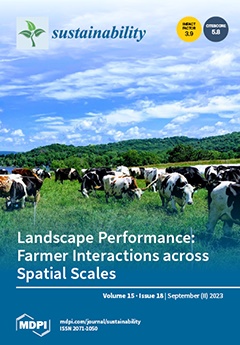Ver ítem
- xmlui.general.dspace_homeCentros Regionales y EEAsCentro Regional Mendoza - San JuanEEA La ConsultaArtículos científicosxmlui.ArtifactBrowser.ItemViewer.trail
- Inicio
- Centros Regionales y EEAs
- Centro Regional Mendoza - San Juan
- EEA La Consulta
- Artículos científicos
- Ver ítem
Leaf Biochemical and Kernel Metabolite Profiles as Potential Biomarkers of Water Deficit in Walnut (Juglans regia L.) cv. Chandler
Resumen
Walnut cultivation is expanding into regions where water availability for irrigation is lower than crop evapotranspiration. However, information regarding the responses and adaptations of walnut trees to water deficit remains scarce. In this study, we applied three irrigation levels, 100%, 75%, and 50% of crop evapotranspiration (referred to as T100, T75, and T50, respectively), to Chandler walnut trees over two consecutive seasons. During the second
[ver mas...]
Walnut cultivation is expanding into regions where water availability for irrigation is lower than crop evapotranspiration. However, information regarding the responses and adaptations of walnut trees to water deficit remains scarce. In this study, we applied three irrigation levels, 100%, 75%, and 50% of crop evapotranspiration (referred to as T100, T75, and T50, respectively), to Chandler walnut trees over two consecutive seasons. During the second season, we evaluated leaf water-deficit biomarkers, including proline, malondialdehyde, soluble sugars, phenols, and flavonoids, using targeted spectrophotometry. Despite not finding significant differences in biomarker concentrations among the irrigation regimes, we observed variations between different collection times (sprouting, endocarp hardening, and maturity). Furthermore, we assessed the kernel metabolome using untargeted gas chromatography–mass spectrometry, profiling seventy-one metabolites across all samples. Notably, forty-one of these metabolites were identified as members of distinct groups, comprising carbohydrates (n = 11), fatty acids (n = 11), organic acids (n = 9), and amino acids (n = 5). Linear mixed models showed no significant differences between the irrigation regimes. However, in the T50 treatment, multivariate analysis (PCA) revealed a higher concentration of osmotic adjustment metabolites, which are potentially associated with protecting oil biosynthesis under high-temperature and water deficit conditions.
[Cerrar]

Autor
Calvo, Franco Emmanuel;
Silvente, Sonia Teresa;
Trentacoste, Eduardo Rafael;
Fuente
Sustainability 15 (18) : 13472. (September 2023)
Fecha
2023-09
Editorial
MDPI
ISSN
2071-1050
Formato
pdf
Tipo de documento
artículo
Palabras Claves
Derechos de acceso
Abierto
 Excepto donde se diga explicitamente, este item se publica bajo la siguiente descripción: Creative Commons Attribution-NonCommercial-ShareAlike 2.5 Unported (CC BY-NC-SA 2.5)
Excepto donde se diga explicitamente, este item se publica bajo la siguiente descripción: Creative Commons Attribution-NonCommercial-ShareAlike 2.5 Unported (CC BY-NC-SA 2.5)


